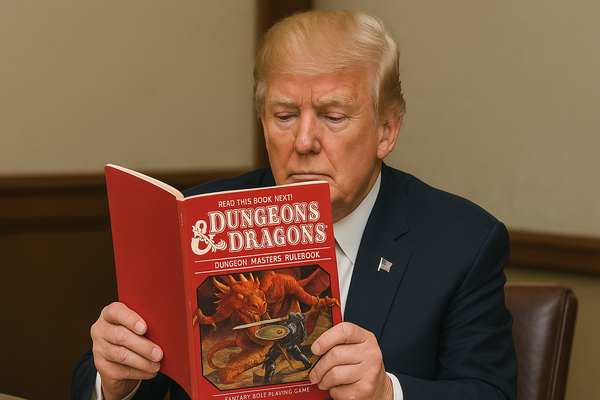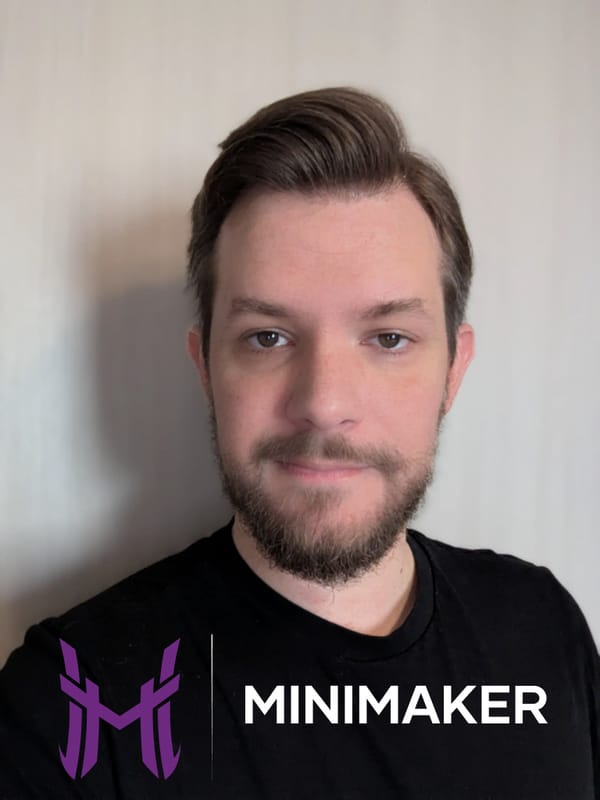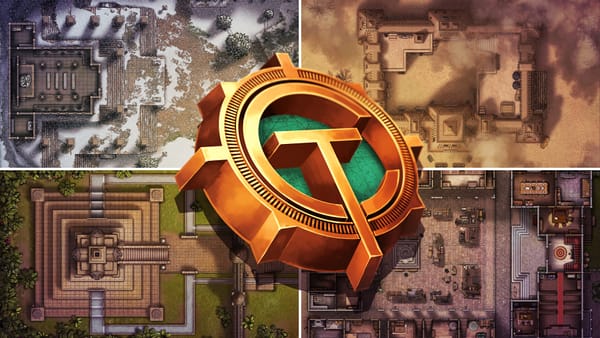From Gamers to Innovators: How Lorescape is Changing Tabletop Terrain
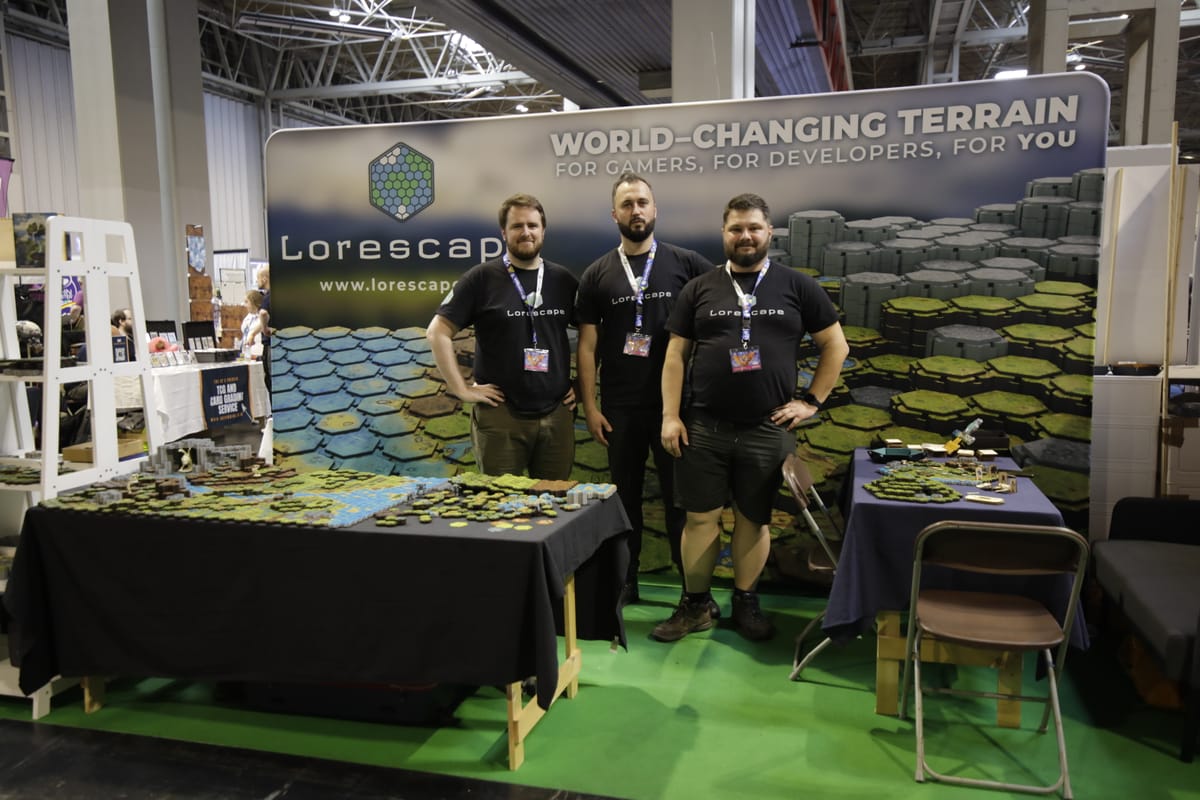
In the world of tabletop role-playing games and wargames, immersion is everything. Every Game Master and miniature enthusiast dreams of bringing their worlds to life with stunning, adaptable terrain—but existing options often come with limitations. Enter Lorescape, a game-changing modular terrain system that blends high-quality design, ease of use, and unparalleled customization.
Created by a passionate team of tabletop gamers—James Simonds, Rafał Baranowski, and Mateusz Zahora—Lorescape was born from a simple frustration: the lack of an easy-to-use, visually stunning, and truly modular terrain system. Determined to bridge this gap, the Polish-British trio leveraged their expertise in product design, marketing, and manufacturing to create a hexagonal, interlocking system that allows players to build intricate multi-level environments effortlessly.
With a successful Kickstarter launch on the horizon and backing from industry icons like Felicia Day and Steve Jackson, Lorescape is poised to redefine how gamers build and experience their tabletop worlds. In this interview, the team takes us through their journey—from concept to reality—and reveals what makes Lorescape stand out in the competitive terrain market.
Hello! Who are you and the core concept of your product in one sentence?
We are the Lorescape team, a Polish-British group of passionate tabletop gamers. The core team consists of James Simonds (CEO and product designer), Rafał Baranowski (marketing and multimedia), and Mateusz Zahora (production and visuals). We have years of experience in plastic products, startups, graphic production, video production and marketing. We combine our expertise to bring Lorescape to life.
Lorescape is a modular, highly detailed, and customizable hexagonal terrain system for tabletop RPGs, wargames, and miniature gaming, allowing players to build immersive 3D worlds.
What's your backstory and how did you come up with the idea?
The idea for Lorescape was born during gameplay, when we started looking for the right solution for easy modular terrain. James, an avid tabletop gamer, was tired of flat, uninspired maps and terrains. He wanted a system that was realistic, versatile and easy to use, but couldn't find anything that met his needs.
We didn't want mock-up terrain, where fantastic, detailed mock-up pieces are available, but can only be used to create a limited form of map, and they are expensive. We were also looking for something more ambitious than printed paper solutions. We were looking for a simple quick modular terrain, but the solutions we were finding had too many limitations.
So we decided to create our own terrain, focusing on modularity, detail and the ability to represent a wide range of biomes. All three of us had previously worked together at another company, we knew each other and our skills, and we knew we could do it.
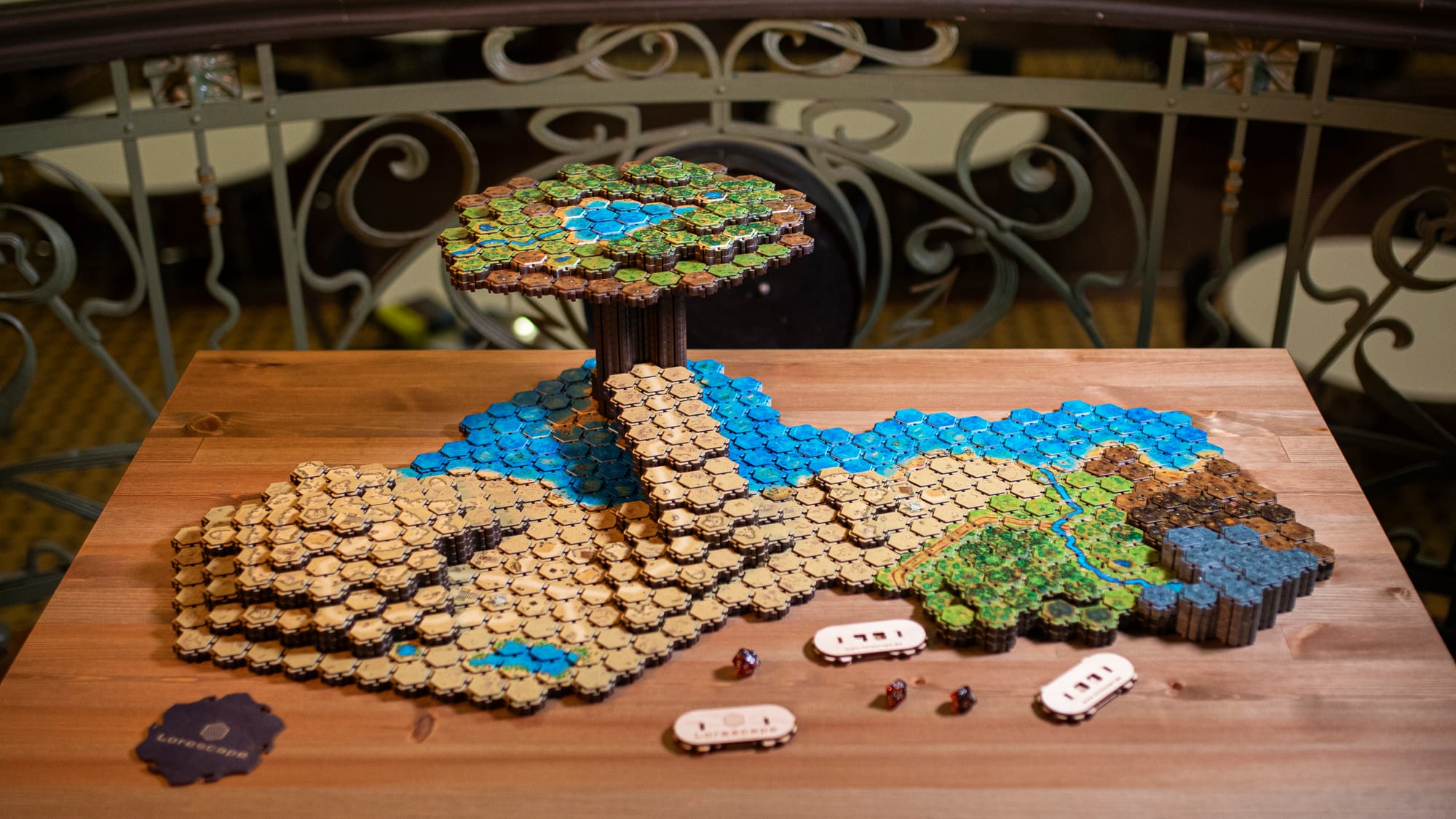
What existing products influenced your design, and how does your product differ?
Actually, we were inspired by our previous work - educational bricks. We wondered how to translate these experiences into a terrain system for tabletop games. Of course, we looked at all the solutions available for decades, but we wanted to go further with our product.
Lorescape differs in its basic feature - interlocking connectors that make it a terrain designed to create intricate three-dimensional structures. Our terrain focuses on high-quality, pre-painted, hexagonal tiles that seamlessly interlock, allowing a level of detail and personalization that is hard to find elsewhere.
What unique mechanics or innovations does your product introduce?
Our unique features include interlocking connectors focused on supporting the creation of complex 3D structures such as dungeons, hidden caves, waterfalls, towers, custom bridges and even multi-level platforms.
Added to this is a special visual system for each biome with high-quality uv printed textures on top of each tile. Our tiles are customized for a wide range of games (dimensions are adjusted to fit universal 32mm mini figures and the most popular hex map grids).
What specific problem or gap in the TTRPG market does your game address?
Lorescape is the answer to the lack of affordable, high quality and truly modular site systems. Many existing options are either too expensive, too generic, too difficult to assemble/paint, too time-consuming to prepare for play, or simply lack the visual appeal we were looking for.
Lorescape offers a solution that is both beautiful, practical and quick and easy to use.
What physical components are included in the final product?
The core of Lorescape is our hexagonal terrain tiles, made of injection-molded abs plastic (with UV printed textures). We offer them in 50-tile “biome sets” (all of the same terrain type), which form pre-made "Environment Packs" (combinations of Biome Sets).
We also offer add-ons like premium wooden storage boxes, hex clips for attaching miniatures and scenery, 3D-printable scatter terrain elements, and steel pickaxes.
What artists and designers are collaborating on the visual elements?
Basically everything was designed in-house, with a little help from friends and freelancers for certain assets. The entire biome system, all the textures, were designed by James.
Who is handling manufacturing and fulfillment?
We're partnering with a producer START, a Poland-based manufacturer with extensive experience in such production. We know them for years and are happy with the cooperation. For global shipping and fulfillment we are cooperating with Hegemon. We've carefully calculated shipping costs and are working to keep them as low as possible, despite recent global increases.
What contingency plans do you have for production delays?
We've built buffer time into our production schedule to account for potential delays. We also have backup solutions identified, in case of unforeseen circumstances. Open and transparent communication with our backers will be a top priority.
Have you accounted for recent shipping cost increases in your budget?
Thanks to our cooperation with Hegemon, we can closely estimate shipping costs, and we have posted estimates on the project page. Of course, in the following months before shipping, some details may change.
We have calculated a special buffer in our cost plan for some cost changes, so as not to surprise our backers in any negative way. As we mentioned earlier, open and transparent communication with our backers will be our top priority.
What previous game design experience does your team have?
All three of us have been working in the toy and game industry for years, even if this is our first game product, we have created similar solutions in the past. We know the community both from the professional side and from our personal interests.
How did your team come together for this project?
We know each other from previous work. The idea for this project was introduced to us by James and we started developing it first as a hobby and eventually as a startup.
What roles does each team member play in development and the campaign?
Thanks to excellent coordination, each of us works independently on his part of the project. We combine James' business experience, with Rafal’s marketing approach and Mateusz's production experience. Rafal’s and Mateusz's combined visual and multimedia skills allow us to create visuals on the fly.
James, on the other hand, does a great job of managing the community created around the project, while also designing important aspects of the product.
What previous Kickstarter experience (if any) does your team have?
We have been only backers so far.
How is your team handling project management and hitting milestones?
Successfully. All exceeded original estimations.
What's your long-term vision for this product beyond the initial release?
We start with a basic collection of biome sets and two visualization scales. But we already have prototypes of different terrain themes, different scales for different applications in different games. The possibilities are endless, from other visual aspects to other shapes. But that’s not all – we are working on our own native games based on that system.
Do you have plans for expansions or supplementary materials?
Yes, we do. New biomes.
Are you building this as a one-off product or as the foundation of a brand?
Definitely as a brand foundation, with great potential for exploration for broader product development.
How do you plan to support the community post-launch?
Already at this stage we have a strong group of engaged community on our discord server and on social media. Our community is already involved in the development of the product and the preparation of additions to it. We expect this process to grow even stronger in the future.
What does success look like for this project beyond funding?
People satisfied with the product. People using our terrain at gatherings with friends and at gaming clubs. Our product gains when you have it in your hands, and we believe that when backers have it in their own, the experience will only get better and they will want to share it with their friends.
How are you building awareness before the campaign launches?
We actively ran social media for months before the campaign launch. We enlisted the support of influencers. We acquired a Brand Ambassador (Felicia Day) and the support of an industry veteran (Steve Jackson). We appeared at many trade shows. We participated in local events. We sent test kits to players and clubs, who themselves passed the information about Lorescape on.
Which content creators or reviewers will be receiving preview copies?
We were supported by American and European creators, and industry portals.
What community-building initiatives are you implementing?
Engaging the community around our social media channels to participate in activities on the discord server, including co-creation of the product to some extent. Meetings at live events.
How are you leveraging social media platforms for your campaign?
In our communication on social media, we try to tell about our product the way we would tell a friend about it. And that's also how we treat our community. We try to respond to most comments and take feedback with care, often implementing it within the realm of possibility.
What stretch goals have you planned to maintain momentum?
We have prepared stretch goals that will be both attractive to backers and at the same time feasible to execute on our side, without threatening the timeliness of the project. Among other visual themes (biomes), additional 3d-printable models.
What's your funding goal, and how did you determine that amount?
Our initial funding goal was 25,200 EUR. This amount was carefully calculated based on our manufacturing costs, shipping expenses, marketing budget, and other overhead costs. We wanted to set a realistic goal that would allow us to deliver a high-quality product to our backers.
How did you price your core reward tier?
When pricing reward tiers, our main goal was that we would be able to maintain a production-quality product and at the same time make it affordable for players. We wanted to offer a range of options to suit different budgets and needs.
What exclusive items are available only during the Kickstarter?
While most of our core components will be available after the Kickstarter, some items, such as limited edition brass pickaxes and token pads, are only available for certain pledge levels during the campaign. We can also offer more attractive pricing, and packages exclusive to Kickstarter.
How are you handling shipping costs and regional availability?
All with the cooperation with the fullfilment company.
What platform/tools do you use for your business?
Google Workspace, Spreadsheets, Meta Ads, TikTok Ads, Google Ads, Google Analytics
Describe the process of launching your campaign
After months of building organic fanbase on social media, and networking on events, and creating a group of testers, we’ve reached paid pre-launch campaign with ads, that naturally turned into regular in-campaign ad campaign.
What was your marketing budget and how did you spend it?
The budget was half of the initial goal to reach, it was spent 80% on Meta Ads, 20% on influencers, Google Ads and TikTok Ads
Which marketing channels did you find most effective? Paid advertising? Social media? Working with influencers?
Paid advertising on meta + organic social media + discord group
Who is your target audience within the TTRPG community?
Our target audience includes RPG players, Game Masters, miniature painters, wargamers, and anyone who wants to enhance their tabletop gaming experience with beautiful, immersive terrain. We're targeting both experienced gamers and newcomers.
What existing communities might be especially interested in your product?
We're focusing on communities related to tabletop RPGs (D&D, Pathfinder, etc.), wargaming (Warhammer, Bolt Action, etc.), mech-warfare players (BattleTech, Lancer), miniature painting, terrain building, and Kickstarter projects in general.
How are you positioning your product against similar titles?
Lorescape stands out due to its combination of high-quality pre-painted tiles, modularity, and the sheer variety of biomes offered. We're not just another terrain system; we're offering a complete world-building solution. We're also emphasizing our commitment to affordability and excellent customer service.
What research have you done to validate market interest?
Two years of market research, analysis of existing related products, endless discussions with community, prototyping and testing and implementing feedback.
How have you incorporated playtest feedback into your design?
Yes, we did, a lot.
Are you using AI in any aspect of your product development (art generation, content creation, etc.)?
Nothing visual is AI generated, we use only Human Intelligence for that and are actually very proud of this.
What percentage of your total budget is allocated to advertising?
Approximately 40% of our total budget is dedicated to advertising and marketing.
Which advertising platforms have yielded the best ROI in your pre-campaign testing?
We found that Meta Ads were particularly effective in reaching our target audience and building pre-launch excitement.
How are you splitting your ad budget between pre-launch, launch day, and mid-campaign?
50%-25%-25%
What metrics are you using to evaluate advertising effectiveness?
1. Number of KS Followers, 2. CTA button clicked on our LP, 3. Conversion from Followers to Backers
Have you hired external marketing expertise or are you handling advertising in-house?
Everything done in-house.
What's your cost-per-acquisition target for backers?
Within market average.
How much runway have you built into your budget for unexpected marketing needs?
10%
What's been your most surprising marketing expense during preparations?
Nothing particularly surprising so far.
How far in advance did you begin preparing for this Kickstarter?
We started working on Lorescape about 3 years ago and preparing for the Kickstarter campaign about 10 months ago.
What pre-launch strategies have you implemented to build your email list?
We've used a multi-pronged approach, including social media marketing (Facebook, Instagram, TikTok, Discord), targeted advertising, collaborations with influencers, and setting up a landing page with an email signup form.
Have you conducted any beta testing of your campaign page with potential backers?
Yes, we've shared drafts of our campaign page with a select group of trusted gamers to gather feedback and make improvements. This helped us refine our messaging and ensure clarity.
What tools or services are you using to manage the campaign?
We're using Kickstarter's built-in tools to manage the project, communicate with backers, and handle pledge management.
How many hours per week is your team currently dedicating to campaign preparation?
Last two months pre-launch we’ve spend every single hour possible to prepare everything, including long night hours. Hard to estimate but more than 10 hours per day. Since launch even more.
What aspects of preparation took more time or resources than you initially expected?
Almost everything took more time than initially expected. But the one that took much more than expected was Kickstarter page preparation. We were happy with early drafts and then almost final version. However between almost final version and actual final version there were numerous hours of changes and adjustments. Some changes needed complete visual rework so that was also time consuming.
Through starting your campaign, have you learned anything particularly helpful or advantageous?
You need to do a lot of organic attempts to get engagement from your target audience and draw the right conclusions for paid promotion. You need to be prepared for different variations and adapt very quickly to the results of analysis.
What have been the most influential books, podcasts, or other resources?
Pre-Launch Club website.
Advice for other entrepreneurs who want to get started or are just starting out?
First start with organic growth and learn from it, test a lot, and then focus on what works best. Focus on the details of your landing page - test what works and what doesn't. Get a certain number of people excited before announcing your launch date. When you feel you're ready, start building hype before launch.
Thanks!


